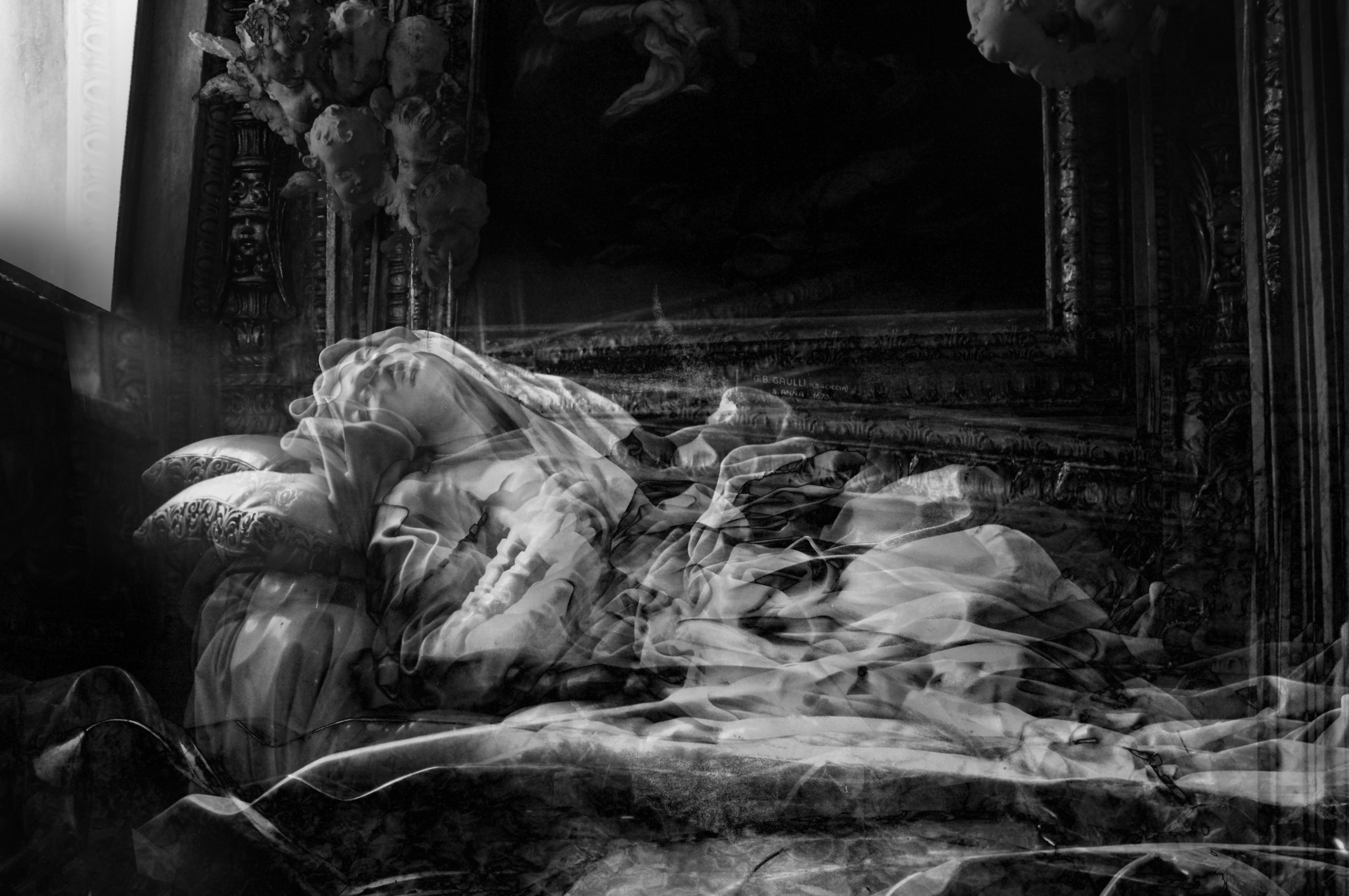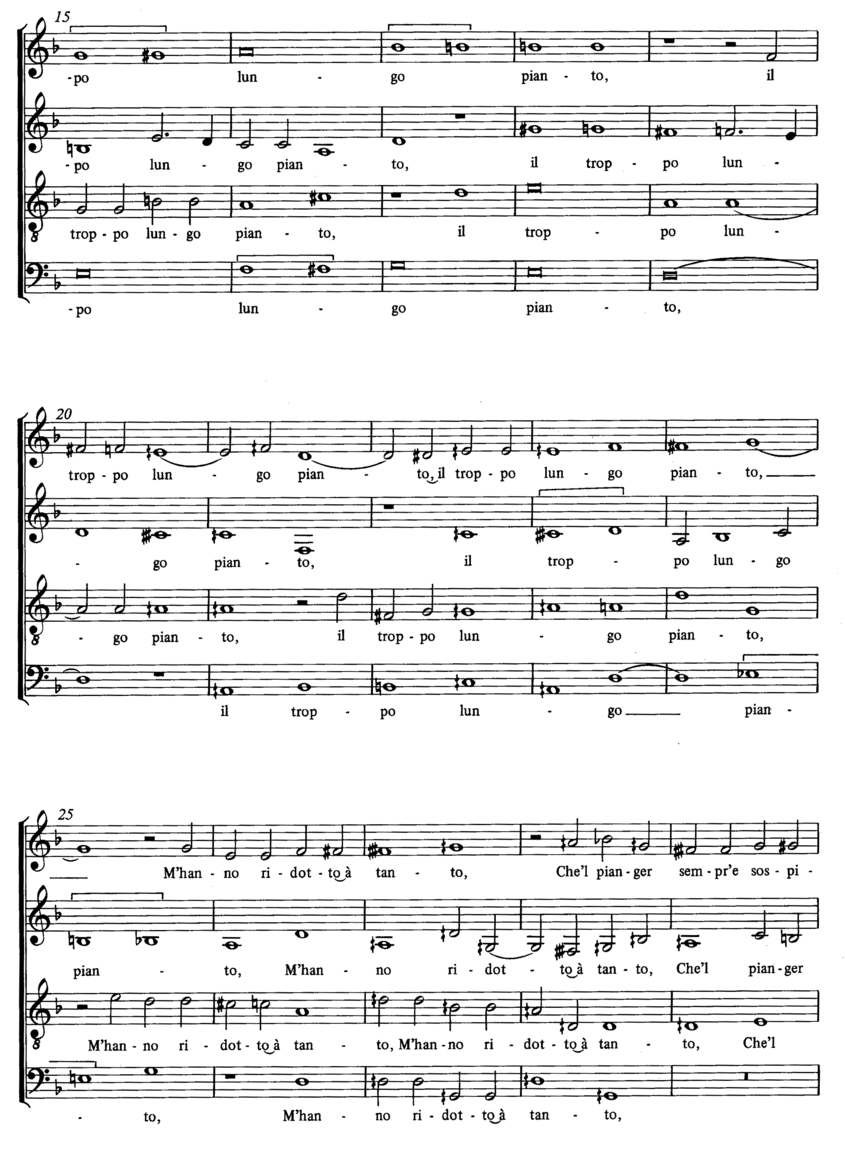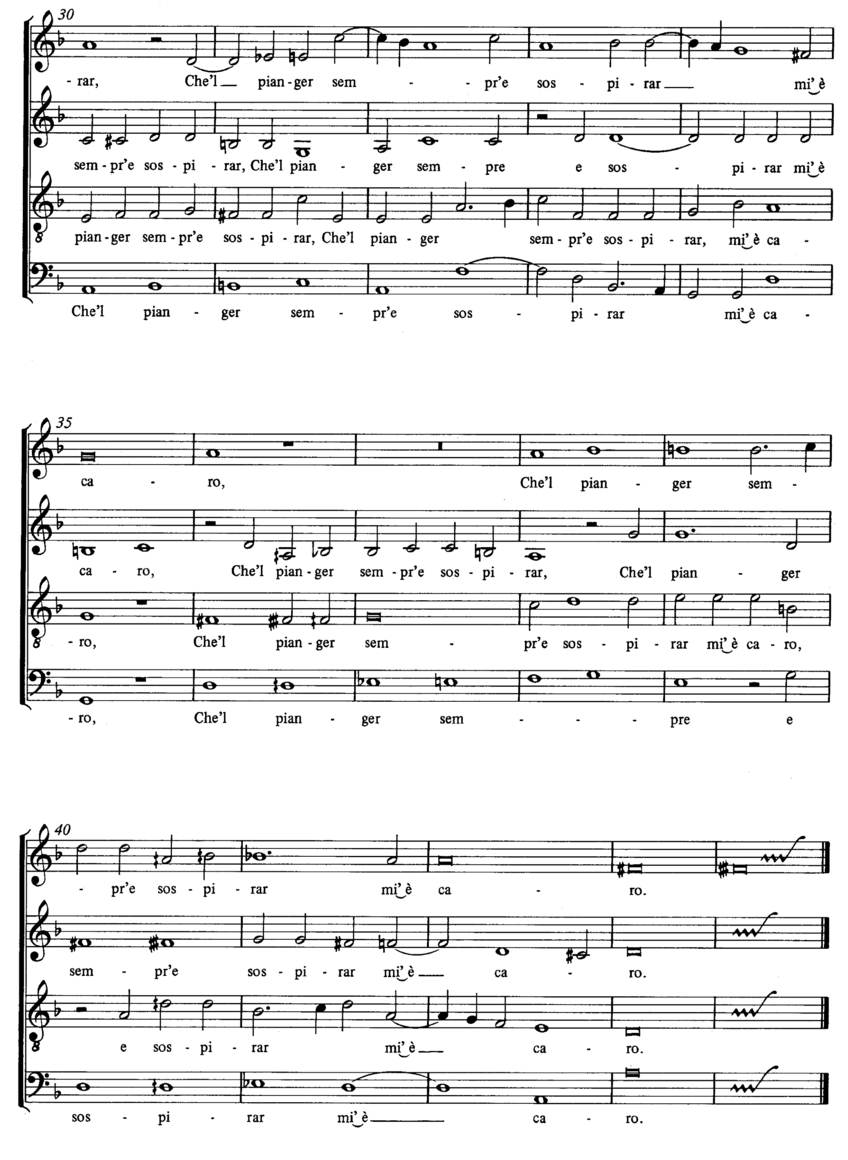The Problem of Resemblance
In his interviews with Daniel Sylvester, painter Francis Bacon tries to put into words the difference between “paint which conveys directly and paint which conveys through illustration” (Sylvester 1999, 18). It is difficult to provide a clear-cut distinction between these two modes, but, as Bacon phrases it, the first “comes across directly onto the nervous system” while the second “tells you the story in a long diatribe through the brain” (Ibid.). It is all the more difficult to tell the one from the other because according to Bacon the painting he calls “pure illustration”, which he also called “figurative” (Ibid., 28), can indeed still affect the nervous system directly, as happens for him with some works by Velásquez. In any case, Bacon’s attempt in his works is to overcome the moment of “illustration”, in order to “brin[g] the force of the image over very much more strongly than if one just sat down and illustrated the appearance” (Ibid. 126).
What happens in the process that Bacon calls “illustration” or “figurative”? In it, there seems to be a relation between “paint” and a “story” that, in order to take place, has to undergo a “long diatribe through the brain”. The process appears therefore to entail three dimensions: 1) the materiality and the action of paint; 2) something to be conveyed (a “story”, a thing, an image?); and 3) a modality of accomplishing the connection between the previous two points. Bacon does not question the first two dimensions. He still wants to convey images, he still operates on and through paint. The decisive difference between his painting and “illustration” takes place in the third dimension, how the connection is made. Crucial is the fact that this connection must happen with a different speed, and that such speed concerns also how the body of the painter/spectator is affected (coming “directly onto the nervous system”).
Usually, when comparisons are made between painters and musicians, the figure that is taken into account is the composer – the creator, the inventor of a musical form. I would like to reflect on another, more intriguing comparison; between the painter and the performer of written music, the “interpreter”. A painter works directly with the materiality of paint, as the performer works with the materiality of sounds and gestures. By contrast, even when confronted with forms of materiality (paper, print, instruments, computers, etc.), composers in the Western tradition work mainly with mental, symbolic objects – predominantly, with notation. Moreover, painters “convey” images provided by visual perception, through an act of decodification of visible reality, and of recodification into the media and inscriptions of art. In their work, something stands for something else, or in a word, they deal with representation, deciding whether to comply with the norm it dictates (figuration and illustration), to defy it (abstraction), or to modulate between its ever present power and the possibility of eluding it (as Bacon did). But in all cases a complex set of rules defining representation is there, preceding and presiding over the artistic act. In a similar way, an interpreter approaches a musical “work” – a pre-given sequence of musical relations and instructions. He or she decodes a given reality – the score, the historical and analytical givens accumulated about and around the work. He or she recodes, into a sonic and gestural inscription.
In the activity of the performance of written music, we can retrace three dimensions similar to those cited above about Bacon’s painting: 1) the materiality and the action of performance; 2) something to be conveyed (a “work”, a sonic sequence, a piece of written music); 3) a modality of accomplishing the connection between the two. The third dimension is expressed by the simple preposition “of”, which is the least noticeable and yet is the most crucial.
Traditional interpreters always have to comply with a complex set of rules defining this “of”, which determine how they produce the connection of resemblance between a work and its performance. Unlike painters, interpreters never “defy” the musical work, they cannot look for abstraction. The space for creativity and diversity in interpretation can be regarded as a balance between the first two dimensions: either more faithfulness to the score and to its “facts” (objectivity), or more liberty to the performative moment, to its unpredictability, and to the expressivity of the performer (subjectivity). Does objectivity coalesce with subjectivity, or are they in contrast? How far can a performer go in subjective choices before effacing the resemblance between performance and the musical work? All of these questions, whose answers give rise indeed to innumerable different interpretations through the creativity of composers and performers, leave the dimension of the “of” untouched, unquestioned, unalterable.
At the basis of my artistic research project is a conviction similar to Bacon’s, that through the performance of written music it is possible to bring about the “force” of a given musical work “much more strongly than if one just sat down and illustrated the appearance” (Ibid., 18). If the moment comparable to illustration, in the case of performance, is interpretation, from the start the objective of my practice has been to produce a resemblance with a given piece of notated music, which I will call the “primary work”, without passing through the set of rules inherited through the interpretational tradition. This implied a starting set of premises.
In the first place, the “matter” of performance (sounds, gestures) should not be moulded ahead of time by the pre-given semiotic units of its score. In other words, the new performance should relate to the primary work without – potentially – containing any single element of its score. Something should be retained of the work; at the same time though, resemblance should be suggested through sounds, musical shapes, and gestures unrecognisable as pertaining to the work as a traditional interpreter would approach it. Secondly, it was necessary to somehow fixate the sonic and gestural sequence of the new performance. In doing so, the risk was that, instead of fundamentally altering the interpretational “of”, this would simply re-emerge at a different stage, to be shifted somewhere else. From the start, it was very clear that the task was fundamentally different than “recomposing” a musical work from the past, insofar as a new composition might have asked to be in turn executed or interpreted.
The first primary work addressed in my research was the madrigal Madonna il poco dolce (1555) by Nicola Vicentino (1511-~1572). I decided not to take possession of the musical code devised by Vicentino and to manipulate it. Rather, I tried to relate to the musical work by means of externality, being alert to the sonic, affective, and aesthetic impact that it had on me. Through all these means I was looking for a common ground, a “greatest common divisor” between Vicentino’s composition and my living experience of it. My own subjective experience – as performer and as listener – and the objectivity of the score were to be mobilised towards each other, so that the sounding and gestural event of the performance would emerge as a third dimension, independent from both subject and object, but generated through their mutual affection. Through a distortion of the “of”, the relations between the two sides of subjectivity and objectivity started to mutate. They began to contaminate each other, and to crucially exchange something of their functions.
The first step was to approach the primary work as an interpreter would: reading the score, listening to existing recordings, and performing the piece myself. I was observing the primary work, not only its codified score, but also the way in which the relations contained in it would be transferred, through traditional execution and interpretation, into the material dimension of performance. Such are the internal relations that constitute the “identity” of a given work, which consents that we recognise it each time it is performed as “the same again”, independent from the differences between renditions. I observed the rules of interpretation, with the goal to move beyond them.
After this phase, I started planning the conditions for a new performance. I tried to work out a graphic scheme, a notated score, a series of instructions; yet, all of these modalities seemed to contradict the starting premise of my research. Through a new symbolic codification, the interpretational “of” would re-emerge at a different position, and remain intact. It was fundamental to renounce pre-given semiotic units – the categories that are expressed by the conventions of notation, but also by a visual diagram relying on such conventions – and instead to utilise a medium able to imprint not only a linear temporal sequence, but also the actual materiality of the vibratory event: phonographic inscription. I produced therefore a “performance” that was recorded, edited and processed into an electronic soundtrack. On the “surface” of the digital audio workstation, I could operate as a painter would on a canvas. The electronic medium was not my “instrument”, a chosen field of expertise; nor was it yet another means through which I was trying to “re-present” my own live performance. It was a support structure for incision, a plane against which to lean the micro-variations of sonic utterances, a performative tool. On it, a structure could be defined, while at the same time events beyond my own will could be fixed and reworked, while the sonic acts that complied too much with interpretation could be deleted or distorted. Through recording and processing, I could experiment with different relations to the score, imprinting some of its elements and re-elaborating them through operations that have something of the graphic and of the haptic. In the making of this “divergent performance”, my memory of the previously interpreted primary work was still operative, but in mutation, turning itself into a non-memory, an active forgetting. The materiality of sound/gesture was obliterating the symbolic dimension of the score.
Through the material inscription, I could capture what of the primary work affected my “nervous system” – the physical and at the same time imaginative sensation of resemblance – at the fastest possible speed, without passing through the “long diatribe” of the decodification of signs and information (in the score), and recodification into new signs and information (in performance). At that moment I could not articulate where the fundamental difference lied, nor what had happened structurally to the elements codified in the score, what was left and what had been subtracted, what had been changed and how. Importantly though, I had accomplished a result that could provide further reflection, and I had discovered in the phonographic inscription of my own performance a tool for constitution and experimentation.
Madonna il poco dolce, after the homonymous madrigal by Nicola Vicentino
Composer: Nicola Vicentino (1511-1572)
Primary work: Madonna il poco dolce
Published in L’antica musica ridotta alla moderna prattica (1555)
Procedure
- Preparatory phase: reading the score; listening to existing recordings of the piece (version for voice, viola and keyboard, Trio Scordatura; version for microtonal keyboard, Melle Weijters); executing the score.
- Compositional phase (generating the sonic image): recording and electronic editing of a soundtrack using voice, small percussions (rubber mallet on the human body and a tea spoon on a ceramic cup), homemade wind instruments (plastic tubes of different sizes), Reaper software.
- Semiotic and performative phase (designing the live performance): devising ad libitum parts for electric guitar and viola. The instruction for the viola was given in person, without notating it. I myself performed on the guitar, using a metal object inserted between the strings (tea spoon) and the following set of pedals: overdrive, distortion, wah-wah, digital delay.
This divergent performance was developed as part of a project led by Bob Gilmore, in which composers and performers were invited to revive the innovative attempt by Nicola Vicentino to reintroduce the three Greek ancient genera (diatonic, chromatic, and enharmonic) into contemporary musical practice. Composers and performers were encouraged to relate their own imaginative world to the idiosyncratic harmonies generated by his system.
1. The first part of the primary work is characterised by several repetitions of the word “Madonna” [my lady] and of the sound /m/, associated with accents that prolong it before the vowel sounds (as in the words “molto” [much] and “amaro” [bitterness]). The lyrics are about unfulfilled love and prolonged torment.
2. The new performance is characterised by a vector of unvented passion and mourning, suggested in the soundtrack by a muted choir of human-like voices, where a sound close to the phoneme /m/ occasionally opens in vowel-like sounds, especially in the few moments of climax. Such a suffocated sound contains variations of the harmonic blend, which suggest vowel changes.
3. The clash of Vicentino’s enharmonic chords against the modern ear’s expectation for just or tempered intonation is evoked by a blurry and unsettling pseudo-harmonic environment. The sounds in the soundtrack follow the profile of the initial chord progression, bending it through the use of glissandos; the initial chords are repeated and hybridised with other parts of melody from later sections.
4. The first climax recalls the cadenza at bar 10, where also the ‘a’ of “amaro” emerges. The next three bars in the primary work – “il breve riso” [the short joy], imitating in the original a swift laugh – are suppressed in the new performance (although the hint to laughter will surface later on) and in their place an unrelated section opens.
5. This section, a sequence of harmonics merged with percussive and whistling sounds, is in its turn a recapitulation of the preceding part, echoing the variation of the harmonic spectrum of the muted sounds.
6. The next part corresponds in the primary work to the chromatic ascent that begins at bar 14 and culminates at bar 18. In the chromatic progression, the lyrics are about a prolonged weeping. In the new performance, the harmonic profile of the progression is kept, but dilated and blurred in glissandos, and the culmination, mimicking the downbeat of bar 18 and dissolving into the short following chromatic descent, is agitated by a sense of impatience and distress.
7. A second unrelated section follows, a variation on the first one reassembling similar sounds in new patterns. From the background, some other recognisable elements surface; the “breve riso” of bars 11-13, rendered through the imitation of a laughter sound made mechanical and artificial through looping; the profile of the soprano phrases “il troppo lungo pianto” [the too long weeping], bars 19-22 and “che ‘l pianger sempre” [that weeping all the time], bars 22-24, in a whistling sound quality.



